Cruising Club of America members visit Greenland’s Forbidden Coast
Story and photos by Simon & Sally Currin
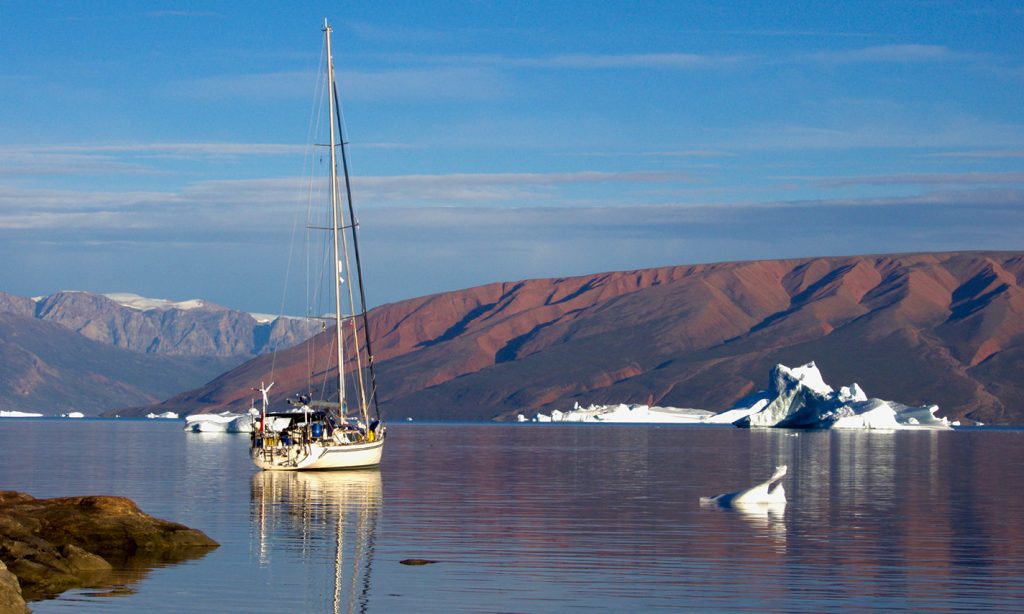
Shimshal anchored in Harefjord
After five seasons cruising the Scottish Hebrides, we dropped our home mooring and slid north through the great tidal races of Cuan Sound and the Sound of Mull before getting beaten up by a stiff northerly in the Minch, which rendered both of my crew sick as dogs. By the time we sought shelter at Lochinver, I was seriously starting to wonder if we should be cycling around the world instead?
Crossing the Atlantic this far north is really a series of very short hops, and the 250 miles from Cape Wrath to the Faroe Islands was most memorable for the time we spent trying to work out how to find a rigger in Iceland. Nothing was broken, but as the Scottish mountains dipped below our stern horizon, an email pinged in from our insurers insisting upon routine replacement of our standing rigging. Iceland is not noted for sailboat services, but by the time we had reached Torshavn in the Faroe Islands, Sally had solved the problem and found an American rigger living aboard his boat in Reykjavik who would do the work for us if we could get the bits shipped.
We have a very good friend who spent a fortune on a cruise to the Faroes to witness either an eclipse or a transit of Venus, I’m not sure which. Why? Gorgeous though these islands are, they must be one of the least likely places in the world to guarantee clear skies for stargazing. We were blown into our landfall anchorage by a rising gale and swung around for a day or two, lashed by rain and swathed in fog. Suffice it to say, we saw few stars during our two-week stay but grew to love these extraordinary islands of birds, sheep, and marine life.
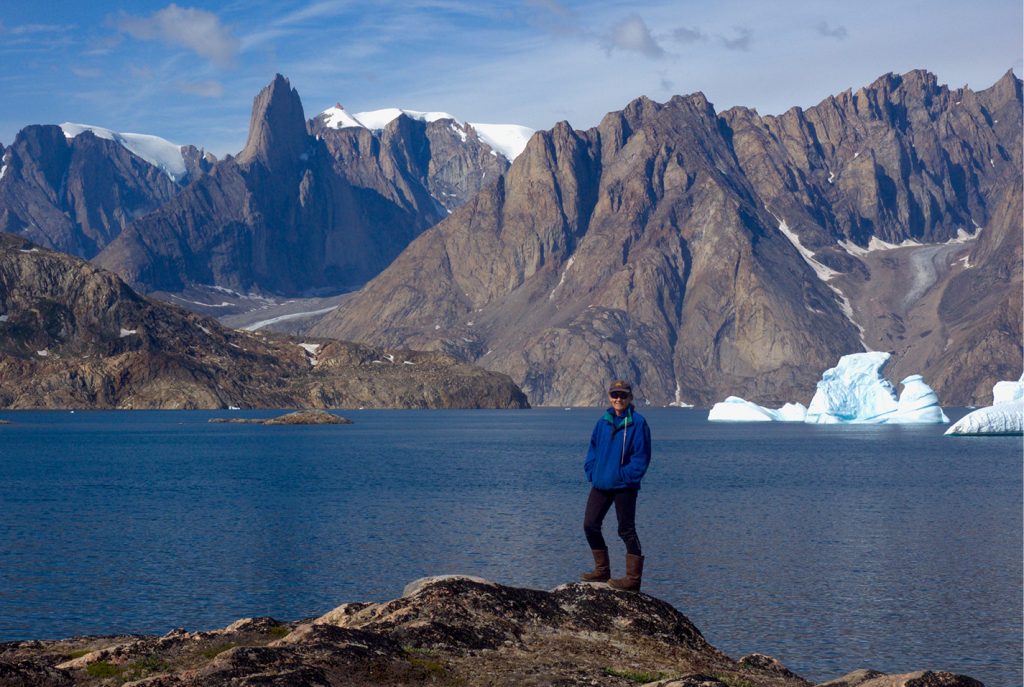
Sally at Jettyshavn
We sailed at midnight for Iceland. The Torshavn harbormaster handed us a large slab of pilot whale prime steak as we let go the lines. We received it with forced smiles, as we knew that it had come from the “grind” of the previous day, when the fjord had been turned red by the blood of a hundred pilot whales driven ashore by small boats to be butchered in the shallows. We ate little of it and were only too pleased to pass it on to another crew heading south, who were rather less squeamish than us.
We made our landfall on Iceland’s wild and mountainous east coast where the police, acting as customs officers, boarded us whilst we were still setting the lines ashore. My dyslexia was, once again, to blame as I had transposed the numbers in our emailed notification of planned arrival and, as a result, we had arrived a month early!
We had some lovely times ashore in Seydisfjordur, wandering around the hills and waterfalls as well as relaxing in the geothermal pool. Our departure did result in a little drama, for as we left the dock to get fuel, the steering seized up completely and we veered off at speed toward the opposite shore. With no apparent cause for a jammed rudder, we managed to come back alongside by judicious use of the bow thruster, only to find that the bearings on the steerer that forms the axle for the steering wheel had seized and this “top of the range” piece of kit could not be serviced and needed to be replaced. Luckily, our boat has two wheels, so it was a simple matter to disconnect the port wheel and complete the 500-mile journey to our winter berth using the starboard wheel only. At least we knew we would always need to fender on the starboard side at all the docks in Iceland.
Due to a decades-old government decree aimed at saving fishermen’s lives at sea, swimming lessons are part of Iceland’s national curriculum so each town and village has a public pool. Thus, much of our anticlockwise cruise of Iceland was spent luxuriating in pools warmed by the earth’s core. Icelanders congregate in these steamy baths to discuss the issues of the day whilst the wind blows and the sleet, snow, and rain lash exposed bits of flesh.
We progressed north to the Arctic Circle before heading west and along Iceland’s rugged north coast, visiting each town’s pool as we went. We were powered along by brisk, cold northeasterlies bearing fog, rain, and occasional sunshine. We chose to spend some quality time ashore in the delectable Westfjords, which are in a large national park and are a haven for wildlife and wildflowers. We made repeated visits to Isafjordur, the most yacht-friendly jumping-off point for expeditions to Greenland.
We arrived at our winter berth in Reykjavik at midnight on the last day of August and watched the embers of the midnight sun gloriously reflected in the windows of Iceland’s iconic Harpa concert hall.
It was here that our plans changed dramatically. We had arranged for a local musician, Aki, to keep an eye on our boat during the long, harsh Icelandic winter of 2015. It turned out that Aki ran Iceland’s only sailing club and spent each summer skippering a whaling boat that is run as an exclusive commercial sailboat charter in northeast Greenland’s Scoresby Sound, named for English explorer William Scoresby, who mapped the area in 1822. To us, Scoresby Sound was the ultimate high-latitude cruising destination. Remote, uninhabited, icebound for nine months of the year, and most significantly, the place that renowned explorer and author H.W. Tilman never reached despite four attempts and the loss of two boats in the process! Very soon after meeting Aki, he had persuaded us to abandon our dash for Canada and spend the summer of 2016 cruising Greenland’s Forbidden Coast in Scoresby’s wake.
In April 2016, we returned to Reykjavik to find our 48-foot cutter, Shimshal, built by CR Yachts Sweden AB, intact and ready to go, having survived a stormy winter. We had visited a few times during the dark months to find her either entombed in snow or buffeted by howling winds. But we have a comfortable, well-insulated cruiser, and so each time we dropped by for a Nordic long weekend, she was quickly converted into a snug, city-center apartment just a few yards from Iceland’s Maritime Museum.
Sailing north up the Denmark Strait in April is not for the faint-hearted, and as we rounded the Snaefellsnes Peninsula, we were lashed by wind, snow, and fog. We paused in the Westfjords and explored ashore again, but this time by ski. There are few greater pleasures than stepping from dinghy onto skis, climbing a mountain, and then swooshing back down to celebrate in the cockpit of your own boat riding peacefully at anchor in an arctic wilderness.
It wasn’t until mid-July that the ice began to break up on Greenland’s Forbidden Coast. Mercifully, that was three weeks before it had done so in 2015. It looked like 2016 was going to be a good ice year, and so we tentatively pointed our bow north from Iceland and, on July 15, 2016, set out on the adventure of a lifetime.
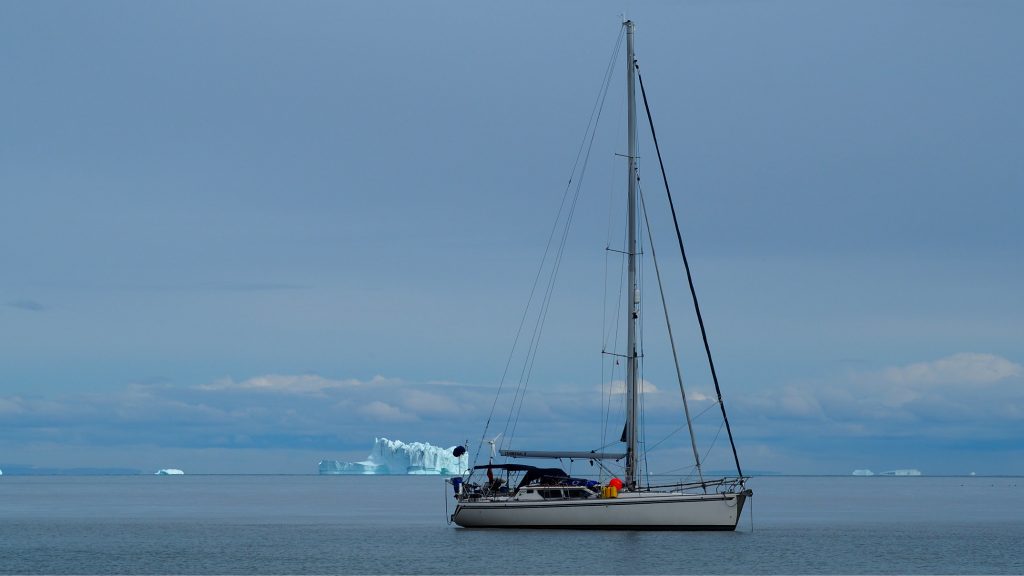
At anchor in Scoresby Sound
To Scoresby Sound
All those who have sailed in ice will remember the excitement of sighting the first iceberg from the cockpit of one’s own boat. The awesome spectacle of the southward drifting polar ice and the nagging anxiety of being in a plastic boat, thoroughly off-piste. The adventure had begun, and the sense of excitement was indelibly tinged with foreboding. We pushed north through schools of dolphin and pods of spouting humpback whales until Greenland’s icy mountains loomed above the horizon.
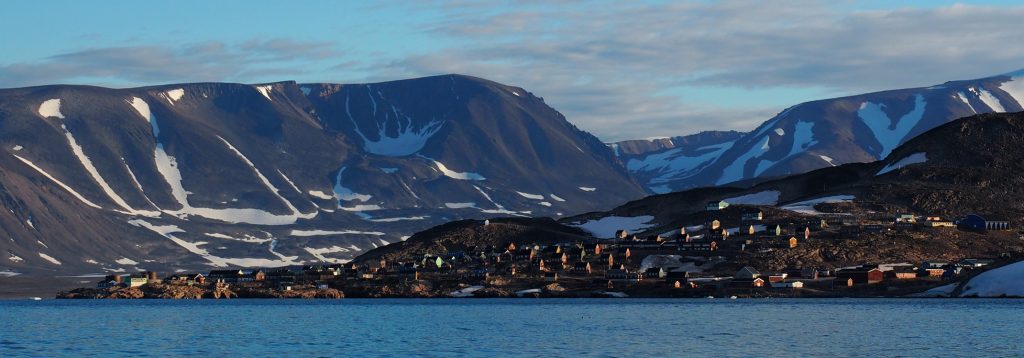
Early morning sun in Ittortorqormit
There was still too much ice to make a landfall on the Forbidden Coast, so we stood off and pushed against the East Greenland Current until we had passed three enormous grounded icebergs off Cape Brewster. The mist hung low on the mountains, and kittiwakes roosted 200 meters above us on the icebergs’ upper slopes.
At 2 a.m. we were in the middle of the entrance to Scoresby Sound, the world’s largest fjord. The mists parted and the sun broke out above the mountains of Liverpool Land, illuminating the extraordinarily beautiful Volquart Boons Coast, which lay to our stern. It was a magical moment that will stay with the crew of Shimshal forever. Sunshine, swirling mist, glittering icebergs, ice-capped mountains, and the thrill of our imminent first landfall in Greenland.
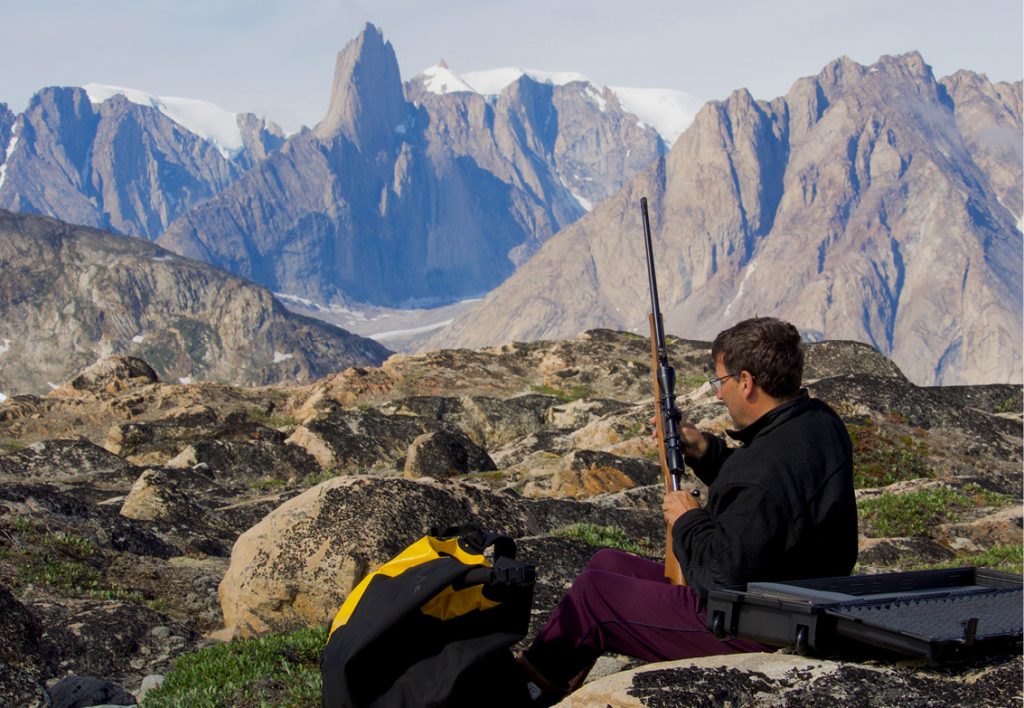
Polar bear protection
Ittoqqortoormiit, with a population of 200, is one of only two permanently inhabited settlements on Greenland’s 1,200-mile-long east coast. We arrived before the first supply ship of the year, and the only grocery store was running low on everything apart from guns and ammunition. The town only gets two supply ships a year, the first at the end of July when the ice has retreated sufficiently for the ice-hardened ship to batter its way in from Denmark. The second delivery is in September, just before the ice begins to form again. We anchored well clear of the tiny quay and listened to the exotic sound of howling huskies before going ashore and presenting our ship’s papers to a disinterested but otherwise helpful policeman. He rather reluctantly stamped our passports, confirming our proud arrival in this remote corner of the world, populated by polar bears, muskox, and rifle-carrying Inuit.
The fjord system that leads westward penetrates 180 miles into the ice-covered landmass of Greenland, and we were lucky to have arrived at the eastern entrance just after the last of the sea ice had cleared. We set sail deep into the fjord system, taking care to avoid the enormous quantity of icebergs carved off the Greenland ice cap. Some of these gnarled behemoths were more than 1,000 meters long.
The weather got better and better as we dodged our way up the sound. The foggy coastline was replaced by the arid upper reaches of the world’s biggest fjord system. The scenery was sublime. Towering rock faces and spires poked out of the ice cap 2,000 meters above. Within the fjord there was ice everywhere. Bergs of all shapes and sizes, gleaming, dripping, and groaning in the 24-hour sunshine. We were now 360 miles north of the Arctic Circle and 180 miles from the open sea, and starting to worry about our extreme isolation.
That evening, we nudged our way into a narrow bay to find an ice-safe anchorage, but instead our keel found a hard rock and we came to a sickening halt as we grounded amidst a stream of expletives. We couldn’t have chosen a remoter spot to fetch up on a tongue of glacial alluvium, but fortune was on our side and we managed to get ourselves off with barely a scratch. Pride and confidence, though, were severely dented!
Ashore the tundra was a feast of ancient lichens and wildflowers, peppering the glacially polished rock. We saw distant muskox, but, although we carried a rifle for protection everywhere, we never saw the elusive polar bears that were no doubt stalking us.
Finding water shallow enough to anchor in steep U-shaped fjords was now proving hard, and at night we were disturbed by icy intruders that needed to be pushed off with the 12-foot timbers we had brought with us for that purpose. Occasionally, savage winds would come smashing down off the mountains and send us surging around our anchor. Those katabatic winds and tenuous anchorages tested our nerves and our determination to press on into Greenland’s interior.
Despite the scenery and the soothing, liquid calls of a great northern diver, we were growing more tense as we neared the icy narrows. A growler watch was kept at the bow whilst the helm attempted to find the route of least resistance through the ice, which was now becoming alarmingly dense. Bravado kept us going, but by midmorning on a glorious August day, Sally and I saw the anxiety etched on each other’s faces, and we knew we had reached our limit. We were just a mile or so from the choked narrows when we spun the wheel to retreat toward the open sea and the relative safety of the Denmark Strait.
At Cape Brewster, we hugged the shoreline to enjoy the Forbidden Coast. The season’s end was approaching and the sea ice had vanished, allowing Shimshal to meander carefree down a coastline that is normally thronged with ice.
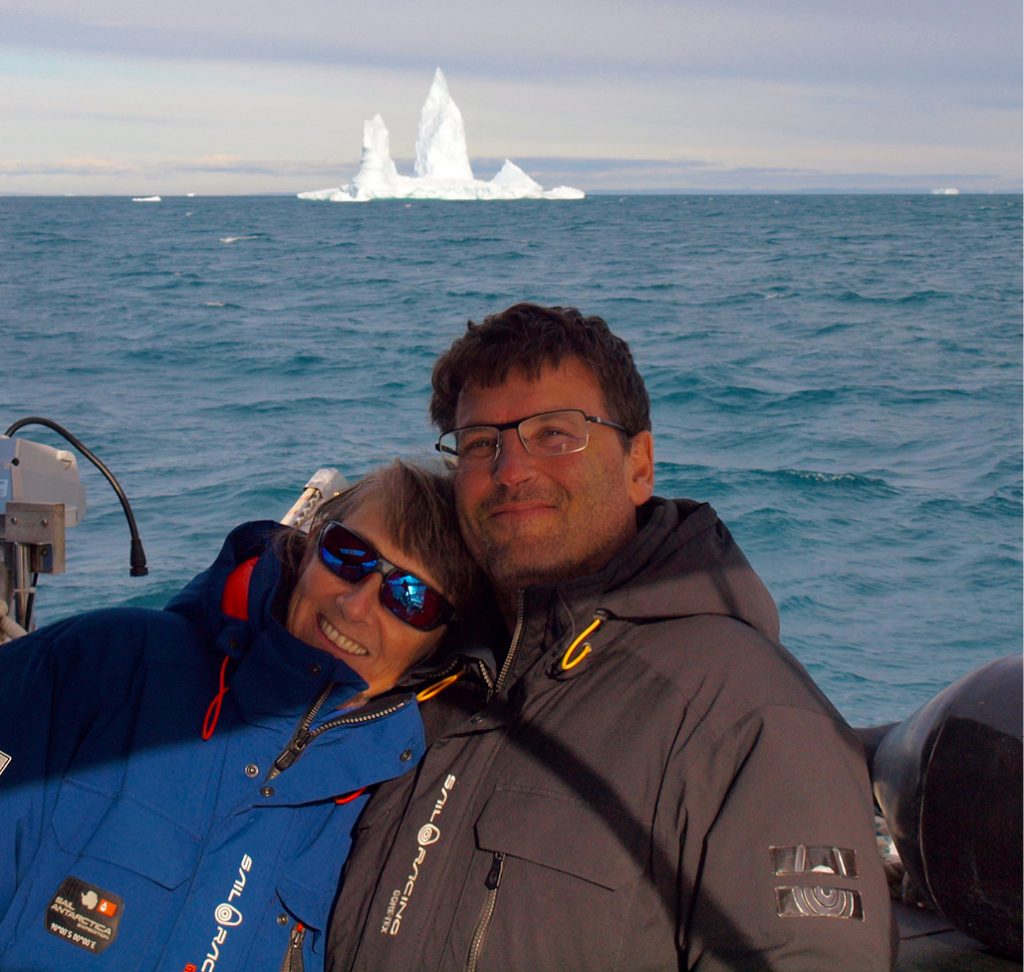
Icebergs in Scoresby Sound
At Turner Sound, we smelled sulphur and came across a steaming beach where we anchored in perfect, yielding mud. Such a relief after the tenuous and rocky bottoms of Scoresby. Ashore, next to the ruins of a hunter’s hut, we came across a perfect hot spring and pool. Sedums and lichens flourished in the steaming microclimate. We had found one of the few natural thermal baths in Greenland. A safe and idyllic place to relax and explore along the shores littered with the bones of seals, arctic fox, and whales. The winter hunters must love this frozen spot, which can only be accessed by dog sledge or snowmobile from Ittoqqortoormiit, some 60 miles to the north.
The Denmark Strait quickly moves from summer into autumn, and we knew a gale was gathering and heading toward us. Our adrenaline was spent, and we knew that a dash south would get us back to the creature comforts and safety of ice-free Iceland. We left the mountains of Greenland in our wake, basking beneath one of the few sunsets we saw, for we had now come south and the year was advancing toward the equinox.
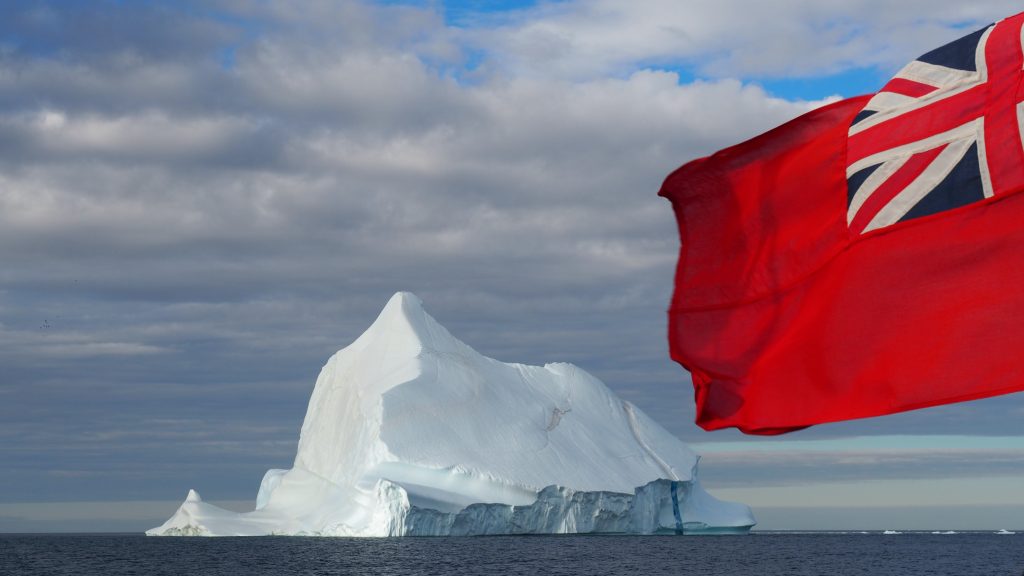
OLYMPUS DIGITAL CAMERA
That evening we altered our sailing plans again. With Greenland’s ice cap still visible during the arctic twilight, amidst a procession of shrinking icebergs and the sounds of spouting whales around us, we knew that we must spend the following summer exploring Greenland. We were not yet ready to swap the rugged beauty of the higher latitudes for balmy, trade-wind sailing. We decided to forego a sprint to Canada in 2017 and instead cruise Greenland’s east and west coasts. We would make the time for it by overwintering our boat in Disko Bay and adding another couple of years to our “slow” circumnavigation. But that’s a story for another year. ■
Simon Currin, a practicing physician, and his wife Sally, a chartered accountant, live and work in Wales. They’ve been cruising part-time since they met in the mid-1990s and in 2006, were lucky enough to commission the building of a semi-custom deck-saloon cutter, fitted out for comfortable high latitude sailing. Shimshal II is a CR480DS that has taken them on voyages to the Baltic, Arctic Norway, Scotland, Wales, and the Viking Route to North America via Greenland.
Simon and Sally are both members of the Cruising Club of America (Boston Station). They’ve been very active in the Ocean Cruising Club for the past decade, and Simon became Commodore in 2019. They are very much looking forward to being able to return to their boat, currently ashore in Nova Scotia, to continue their voyage south to Central America, with plenty of stops along the way.
Editor’s note: This article was originally published in the 2021 edition of Voyages, the Cruising Club of America’s (CCA) annual publication, and is reprinted with permission. Special thanks to CCA Commodore J. W. Robert Medland and Voyages Editors Zdenka & Jack Griswold.
The Cruising Club of America comprises more than 1,300 accomplished ocean sailors who willingly share their cruising expertise through books, articles, blogs, and onboard opportunities. Together with the Royal Bermuda Yacht Club, the CCA organizes the legendary Newport Bermuda Race. With active involvement and support from its 14 stations and posts around the United States, Canada and Bermuda, the club focuses significant national and international outreach efforts on ocean safety and seamanship training through hands-on seminars. For more information, visit cruisingclub.org.




